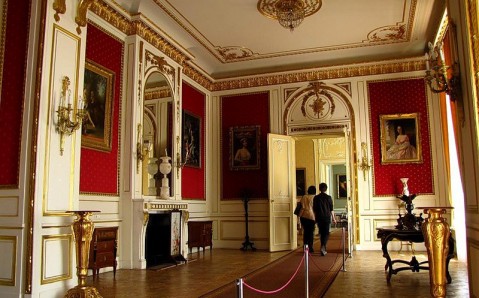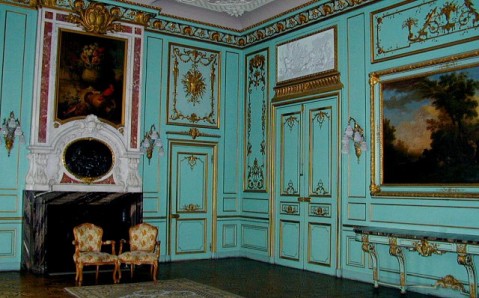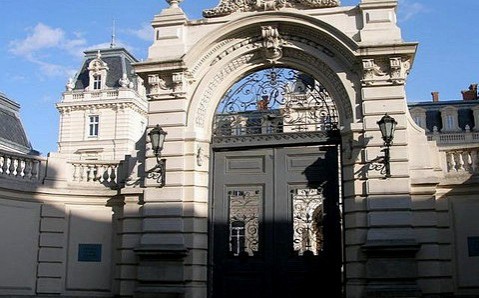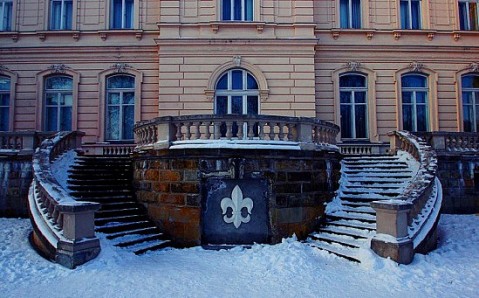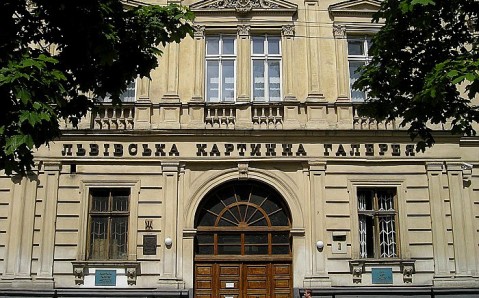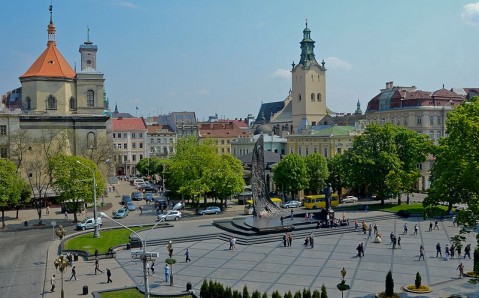Potocki Palace
Kopernyka St. 15
Wherever you go in Lviv, you are inevitably astonished by its inimitable and varied architecture. However, the Potocki Palace, hiding behind open-worked forged fence on one of the streets that radiate from the main city artery, Svobody Avenue, stands out against the background of majestic ancient buildings, huddling in the downtown. Its elegant building, whose luxurious forms are reminiscent of French Renaissance castles, is rightly considered to be one of the most interesting and beautiful monuments of architecture in Lviv.
In the middle of the 19th century, a park with a small hunting homestead, owned by the noble Polish family Potocki, was located on the modern palace’s place. A legend states that Potocki family owned these lands since the 17th century. In 1860, the Count Alfred II Potocki ordered to pull down the mansion and to build big gala palace on its place. The palace was intended for solemn receptions and high-rank meetings. As long as the count was in fond of exquisite French architecture, he chose the project of the prominent architect from France and hired Polish architect Julian Tsibulsky to adapt and implement it. The customer wasn’t destined to see the palace; he had died before the construction was finished and his son continued to supervise the building process, afterwards.
In 1880, the luxurious palace that harmonically combined traits of baroque and classicism was raised. It was a three-storeyed building with high mansard roof and elegantly decorated facades. Monumental gates with two side wings separated building’s yard from the Kopernika Street. Given frequent receptions, special areas for carriages were equipped in the yard. The terrace, from which rounded stairs descended to the park, was located on the opposite side of the Potocki Palace.
Palace’s interior was as exquisite as its exterior. It was designed in the style of the French King Lui XVI. The ground floor was occupied by several gala halls, each of which was individually designed and conformed to its name: the Red or the Dancing Hall, the Blue Hall and the Mirror Hall. All of them were decorated with stucco work, gilt and colored marble. The walls were draped with silk of corresponding color and adorned with paintings by famous European masters. Fretted marble fireplaces were covered with gilded bronze. Potocki Palace’s rooms were furnished with gorgeous furniture from fine woods.
All this richness and splendor has survived until now almost unchanged. The palace underwent large scale renovation only once, when, in 1919, the military plane accidently caught on it during unfortunate maneuver and provoked fire on the upper floors. The restoration took several years. After the World War II, the Potocki Palace hosted various institutions, and up to the early 2000s the Wedding Palace was situated here.
Today, the historical building’s premises are occupied by the European Art Museum, which is a chapter of the Lviv Picture Gallery. Its halls house expositions of antique interiors and European painting, dated to the 14th – 18th centuries. The Park of Fortifications in Miniature was recently opened in the Potocki Palace’s yard.

 Western
Western

